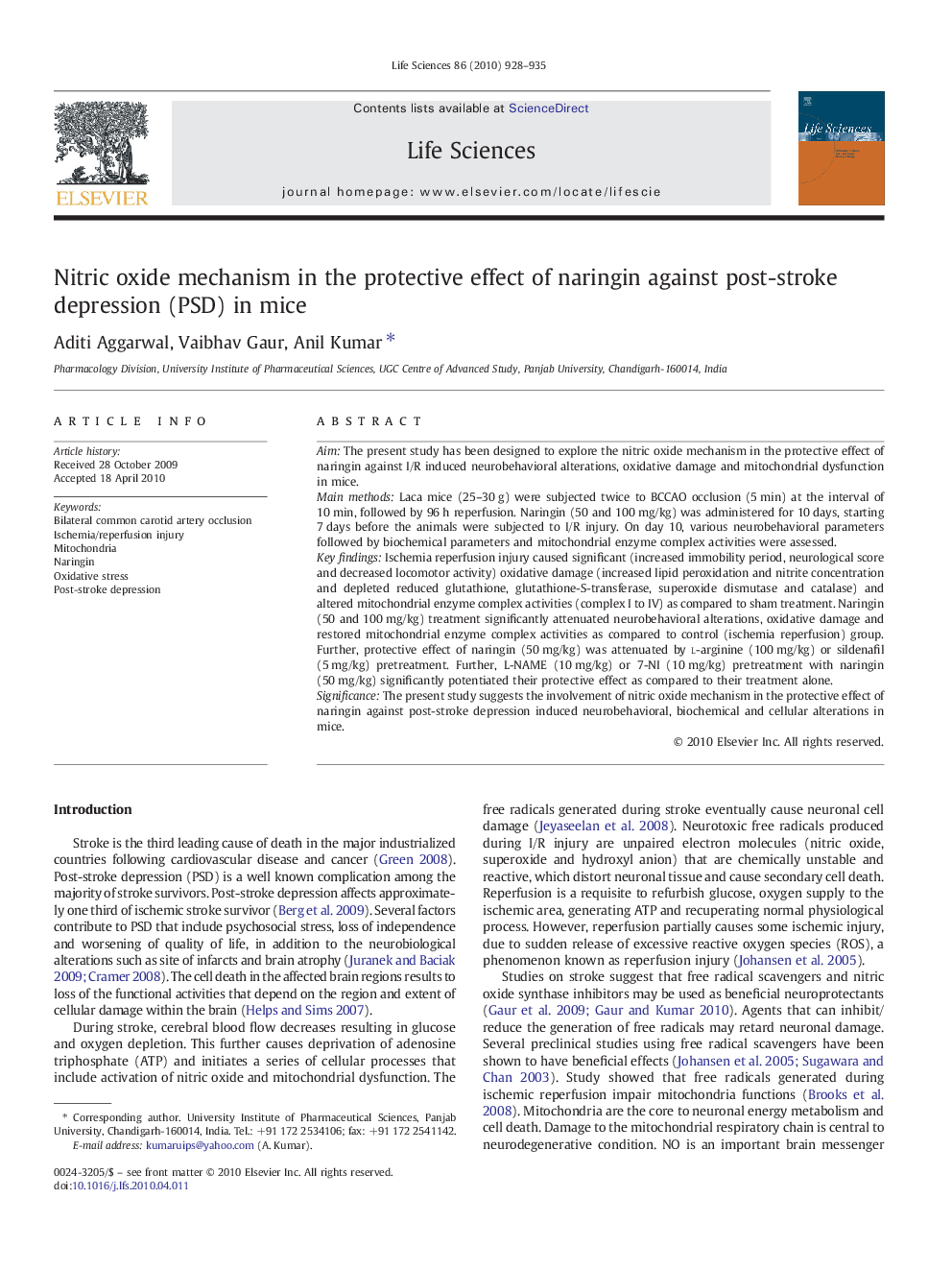| Article ID | Journal | Published Year | Pages | File Type |
|---|---|---|---|---|
| 2552690 | Life Sciences | 2010 | 8 Pages |
AimThe present study has been designed to explore the nitric oxide mechanism in the protective effect of naringin against I/R induced neurobehavioral alterations, oxidative damage and mitochondrial dysfunction in mice.Main methodsLaca mice (25–30 g) were subjected twice to BCCAO occlusion (5 min) at the interval of 10 min, followed by 96 h reperfusion. Naringin (50 and 100 mg/kg) was administered for 10 days, starting 7 days before the animals were subjected to I/R injury. On day 10, various neurobehavioral parameters followed by biochemical parameters and mitochondrial enzyme complex activities were assessed.Key findingsIschemia reperfusion injury caused significant (increased immobility period, neurological score and decreased locomotor activity) oxidative damage (increased lipid peroxidation and nitrite concentration and depleted reduced glutathione, glutathione-S-transferase, superoxide dismutase and catalase) and altered mitochondrial enzyme complex activities (complex I to IV) as compared to sham treatment. Naringin (50 and 100 mg/kg) treatment significantly attenuated neurobehavioral alterations, oxidative damage and restored mitochondrial enzyme complex activities as compared to control (ischemia reperfusion) group. Further, protective effect of naringin (50 mg/kg) was attenuated by l-arginine (100 mg/kg) or sildenafil (5 mg/kg) pretreatment. Further, L-NAME (10 mg/kg) or 7-NI (10 mg/kg) pretreatment with naringin (50 mg/kg) significantly potentiated their protective effect as compared to their treatment alone.SignificanceThe present study suggests the involvement of nitric oxide mechanism in the protective effect of naringin against post-stroke depression induced neurobehavioral, biochemical and cellular alterations in mice.
